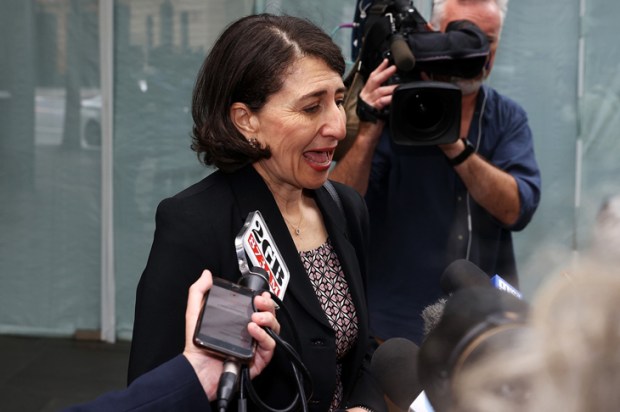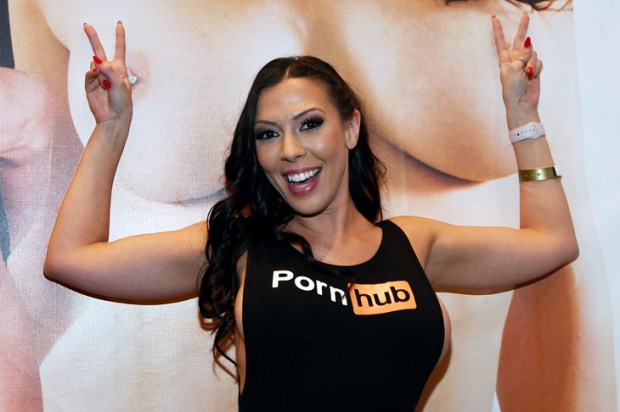
Andrew Bolt got into trouble recently when he suggested that some people exaggerate their aboriginality for financial gain. Having just returned from the Melbourne Cup carnival, I can report that the indigenous look has never been more popular. Bolt was just skimming the surface of this social phenomenon.
At the races, many thousands of women and even some men looked positively dark, their skin glowing with the benefits of an elaborate browning process. Admittedly a few had turned bright orange, resembling disciples of Bhagwan Shree Rajneesh, but the great bulk of the clothes horses had decided, for this season at least, that abo is in.
In the indigenous stakes they were clear frontrunners, as traditional aboriginal leaders like Michael Mansell and Geoff Clark fell off the pace. In fact, some of the women appeared to have dismembered Clark’s tribally feathered cape and plastered it onto their dresses and hats. By day’s end at Flemington, the native metamorphosis was complete as hordes of nomadic women walked off the course barefooted. Hunter-gatherer men were tasked with carrying their expensive but incredibly painful shoes, in a style reminiscent of lugging a wallaroo carcass back into camp.
This is, without doubt, the greatest breakthrough in the reconciliation process since the 1967 referendum.
Until now governments have spent many years and many millions trying to get white Australians to be nice to brown Australians. Bolt was even subjected to a lengthy court process. This kumbayah policy, however, has yielded indifferent results. Most Australians still regard government-led reconciliation as rubbish, a waste of money up there with the Pink Batts.
As ever, the racetrack has shown the way forward. Instead of trying to bridge the vast cultural gap between aboriginal and non-aboriginal Australians, government policy should aim at making the indigenous look universal. Think of it as a Direct Action approach. If all white Australians browned up then, by definition, racism would disappear. No one could tell the difference between Larissa Behrendt and Megan Gale, between Ernie Dingo and Shane Warne.
At the ALP national conference in 1908, party leader Andrew Fisher famously declared, ‘We are all socialists now.’ At next month’s Labor conference in Sydney, Julia Gillard should proclaim, ‘We are all brown now.’ The Reconciliation Australia Board should be replaced by the Australian Browning Organisation. Expensive reconciliation advertising campaigns and gimmicks should be abandoned, superseded by the distribution of tanning vouchers — a tremendous boost to economic activity in suburban shopping strips and their beauty salons.
I want to see Gillard and her Indigenous Affairs Minister, Jenny Macklin, in the vanguard of this effort. Instead of poncing around with welfare reform and the increasingly futile Northern Territory Intervention, these two Victorian Lefties should pop down to Toorak Road and jump under a tan gun. Why haven’t the PM’s minders given this a test run already? They have tried everything else to spruce up Gillard’s image: media training, grooming experts, Botox and even Timbo’s shed. Why not the full monty of a spray tan clinic?
The Liberal party would feel obliged to fall into line, of course, ending its pattern of oppositionism. How could a leader nicknamed ‘Abo’ do otherwise? The only downside I can see is a proliferation of land claims in Melbourne’s south-eastern suburbs, with the traditional boutique owners fighting off the land rights of the newly formed Behrendt/Gale/Dingo/Warne coalition.
Bolt must be wondering what all the fuss is about. If the hanging judge Mordy Bromberg got his backside trackside surely he would offer Andrew an apology.
•••
Labor luminaries have always taken an innovative approach to reconciliation, none more so than Graham Freudenberg, the Don Bradman of Australian speechwriting. Freudy started his career as an afternoon newspaper journalist, back in the days when we had afternoon newspapers. These work hours and habits never left him: rising each day around noon and then writing deep into the night.
During his time with Gough Whitlam, the task of transcribing Freudy’s speeches and keeping tabs on his movements was given to Joy O’Brien. She was typical of the selfless Labor women who served the party in the Seventies and Eighties, before Emily’s B-listers gatecrashed their way in. She had a tough job with Freudenberg — a hard dog to keep on the porch.
If he hadn’t arrived at the office by mid-afternoon, O’Brien would ring around his favourite bookshops and bars to track him down. One day during the first term of the Whitlam government, Freudy was needed to complete an important speech but it was impossible to find him. Apparently the Prime Minister’s speechwriter had disappeared. Anxiety grew that Whitlam would be left speechless, in a prepared-text kind of way.
Finally Freudenberg emerged, with O’Brien noticing he had on the same clothes as when he had left the office the night before. As the story unfolded, the master wordsmith’s movements became clear: he had wandered out of Parliament House and been invited into the aboriginal tent embassy on the front lawns to discuss pertinent political matters. And there Freudy bunked down for the night, having polished off a supper of goannas and goonies. He simply dusted himself off the next day and walked back into work. Reconciliation had been achieved within the highest office in the land.
The post Latham’s law appeared first on The Spectator.
Got something to add? Join the discussion and comment below.
Get 10 issues for just $10
Subscribe to The Spectator Australia today for the next 10 magazine issues, plus full online access, for just $10.














Comments
Don't miss out
Join the conversation with other Spectator Australia readers. Subscribe to leave a comment.
SUBSCRIBEAlready a subscriber? Log in